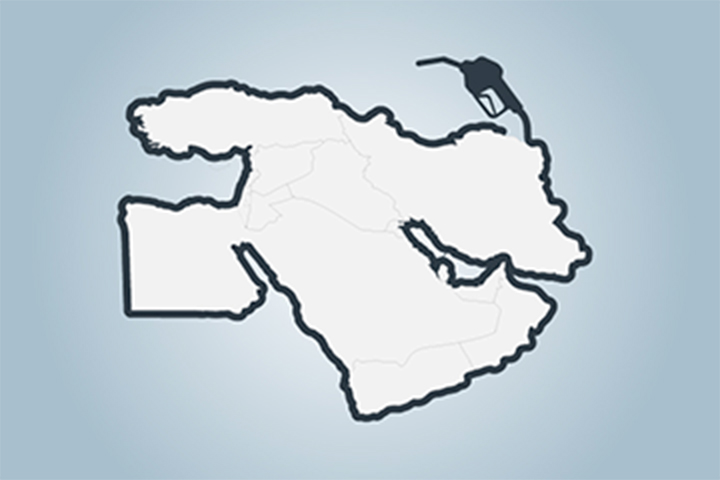Investing in dividend shares: what to look for?

Keytrade Bank
keytradebank.be
April 26, 2022
(updated August 29, 2022)
5 minutes to read
A decent company pays a decent dividend. A pearl of wisdom from Frederik van Beuningen that for many investors forms one of the pillars of their strategy. Dividends are therefore an attractive bonus to pick up along the way. Listed companies paid out a massive EUR 1,339,000,000,000 in dividends last year. That is equal to roughly three times the gross domestic product of Belgium.
A dividend pays out a part of the profits. Instead of companies using that portion of their profits to invest or to increase their reserves, they pay it out to shareholders. Usually they do so quarterly or annually. This means that companies are mainly rewarding those shareholders who join them in a long-term relationship.
By investing in dividend shares, you are not only hoping to see an increase in value through rising share prices (and/or currency movements), but also from the money that you get in your pocket from time to time. Dividends are particularly attractive when returns on savings accounts and bonds are low. At a time when most savings accounts hardly pay any interest at all, and government bonds in euros are also hovering around zero, the yield through dividends looks even more impressive.
Over the past 10 years, the average gross dividend yield of the S&P 500 in the US has hovered around 2%, while the average gross yield of the Euro Stoxx 50 was roughly double that. This difference is due to the nature of the S&P 500, which has more growth shares (that traditionally pay few if any dividends) and the fact that companies in the US are more likely to buy back their own stock (buybacks) to create gains in value for shareholders.
However, before you start searching for shares, funds or trackers that pay out dividends, here are a few things to bear in mind before pressing the buy button.
Is a dividend stable and sustainable?
One year EUR 2.00 dividend per share, the next year nothing at all, the following year EUR 0.27, etc.? A relatively stable dividend is essential if you are committing to investing in a dividend share over the long term. Regardless of World Wars and economic crises, companies such as Stanley Black & Decker (1877), ExxonMobil (1882), Procter & Gamble (1891), Coca-Cola (1893) and Colgate-Palmolive (1895) have been paying dividends without a break for over a century now. Companies therefore need to be able to maintain their dividends at the same level even during difficult years.
In other words, it is important not to focus narrowly on the current dividend yield, but to look broadly at the track record. It is a good idea to look at the dividend trend over the years. In order to generate real income from your shares, constant dividend growth is important, at a level that can beat or largely offset inflation.
However, looking only in the rear-view mirror is not enough either. A high dividend or an impressive track record may appear attractive, but it is only of interest if the company can commit to maintaining this level in the future. If a company pays out a high dividend while operating profits are under pressure, some warning lights should be flashing. There is a risk that these companies will need to go into debt in order to continue to pay out dividends at any cost. Paying out too much in dividends can, in turn, indicate that the company is not investing very much, so creating the risk of lower growth.
When a company increases its dividend or pays one out for the first time, this is a positive sign. It indicates that it is currently able to pay a dividend to investors, and at the same time expects to be able to do so in the future.
What type of dividend is it?
Apart from a cash dividend, a company can also opt to pay out a dividend in its own shares or offer a choice of either (optional dividend). If the company chooses to pay its dividend in shares, this creates additional shares. As a result, dilution generally occurs, meaning earnings per share reduce. A share dividend is therefore sometimes a weak signal about the financial strength of a company.
How do I keep my costs down?
Trying to put together your own diversified basket of 25 dividend shares not only requires a lot of homework and follow-up, but is also an expensive thing to do when you end up placing 25 buy orders. That’s why a tracker or investment fund may be the solution. A tracker – also known as an ETF – tracks an index "passively", in this case dividend shares. A fund is actively managed: the manager of the fund and his/her team investing in the dividend shares which they regard as having the greatest potential.
The advantage of these trackers and funds is that they not only allow you to invest in a whole basket of dividend shares in one step, but they also come in all kinds of shapes and flavours. Some trackers and funds focus on certain regions (e.g. European dividend stocks), some specifically focus on companies with a long track record, others on emerging dividend stocks, others look for socially responsible investment, etc. In this way, you can invest in dividend shares in a very targeted way, following your own strategy and preferences, without having to spend a lot of time studying them.
What about tax?
Taxation is one aspect of dividend investing, but should never be the (sole) driver. With a few exceptions (certain real estate shares), you generally pay 30% withholding tax on dividends in Belgium. If you invest in foreign dividend shares, you will normally have to pay withholding tax at source, so you will be taxed twice.
However, you can recover the withholding tax you paid in Belgium on dividends on certain Belgian and foreign shares. An initial tranche of EUR 800 of dividends is exempt from withholding tax, which can give you a tax benefit. However, you must apply for the reimbursement yourself on your tax return, and the reimbursement only applies to shares (so not to funds or trackers).
If you don't need the dividends, but you like the sound of dividend shares, then trackers and funds offer an alternative solution. By opting for the reinvestment version, rather than the distribution version, the tracker or fund will reinvest the dividends you received. In this way, you do not pay withholding tax when you finally sell the fund or tracker (as long as the tracker or fund does not invest in bonds).


